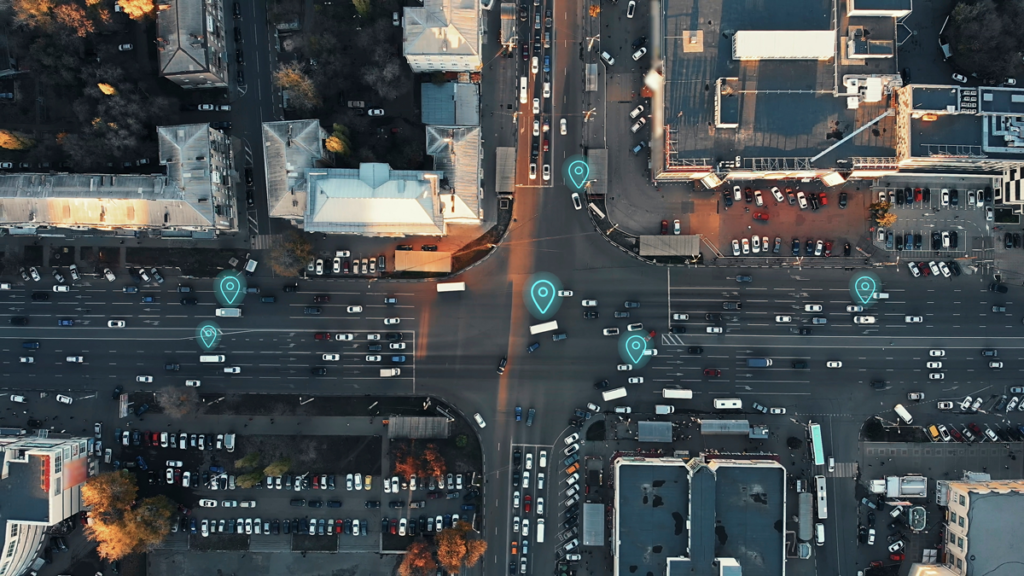There are multiple factors affecting GPS accuracy. In this article, TECHDesign has pointed out three main factors that are the position of satellites, the features of GPS receivers, and the signal effect from surrounding environment.
What is GPS and What is GPS Accuracy?
The Global Positioning System (GPS) comes from the United States and is one of the Global Navigation Satellite Systems (GNSS). It provides the location and information to GPS receivers for users to position themselves. TECHDesign has once introduced all the Global Navigation Satellite Systems in detail in the article “A Glance of GNSS and Its Future Trend”. GPS accuracy indicates the degree of how close the GPS measurement to the actual position.
Top 3 Factors That Affect GPS Accuracy
Factors that affect GPS accuracy are categorised into three portions, which are the position of satellites, the features of GPS receivers, and the signal effect from surrounding environment.
1 – The Position of Satellites
Satellites are the basic elements of positioning. You need at least three satellites to position an object, and one more satellite to eliminate the errors. But of course, the more satellites used to calculate the position, the better level of GPS accuracy it will be.
The distribution of satellites is important as well, for example, if the signals come from rather evenly distributed satellites, the GPS accuracy will be higher. The value of DOP (Dilution of Precision) can be used to calculate GPS accuracy, and a smaller DOP indicates a more accurate GPS signal.
Fig. 1 Factor affecting GPS accuracy – position: four satellites to position an object (Source: www.gps.gov)
2 – The Features of GPS receivers
The positioning capability of a GPS receiver is one important factor of GPS accuracy determination. How many GNSS systems and in which frequency bands a GPS receiver can support directly affect the performance of the receiver. It is easy to understand that the more GNSS systems and frequency bands a GPS receiver can support, the better the receiver can perform. (You can still find all the frequency bands in the article “A Glance of GNSS and Its Future Trend”.)
Moreover, the antenna performance, the position algorithm, and the number of satellite tracking channels are essential factors as well. A great antenna can perform high sensitivity, for instance, capable of receiving a signal down to -160 dBm would be a good receiver already. GPS receivers in the market all have enough tracking channels to trace multiple satellites and ensure a certain GPS accuracy.
3 – The Signal Effect from Surrounding Environment
Since the signals from satellites to GPS receivers need to travel a long way, the propagation environment affects the signal strength and positioning correctness a lot. The ionosphere, the troposphere, signal blockage and reflection are all elements that cause errors to occur. The ionosphere, which locates between the thermosphere and the exosphere, will slow down the velocity of GPS signals. The troposphere, which is the lowest layer of Earth’s atmosphere, can sometimes cause radio reflections.
Fig. 2 Factor affecting GPS accuracy – surroundings: The ionosphere and the troposphere in the signal propagation path
(Source: FURUNO, TECHDesign)
Down to the ground, buildings, walls, trees, highways, and all other obstacles can block or reflect the GPS signals, then create positioning errors or delays. Hence, the surrounding environment can degrade the GPS accuracy in a large portion.
Fig. 3 Factor affecting GPS accuracy – surroundings: Signal blockage and reflection from obstacles (Source: www.gps.gov)
You can easily purchase REYAX’s GPS modules at TECHDesign now. The GPS modules support all the GNSS engines (including GPS, GLONASS, Galileo, and BeiDou) and with GPS/GLONASS/BeiDou antenna embedded. Normally the accuracy of most GPS modules is below ±3 meters, and the accuracy of REYAX’s GPS modules can be down to ±1 meter. So, why don’t you come visit TECHDesign immediately?
